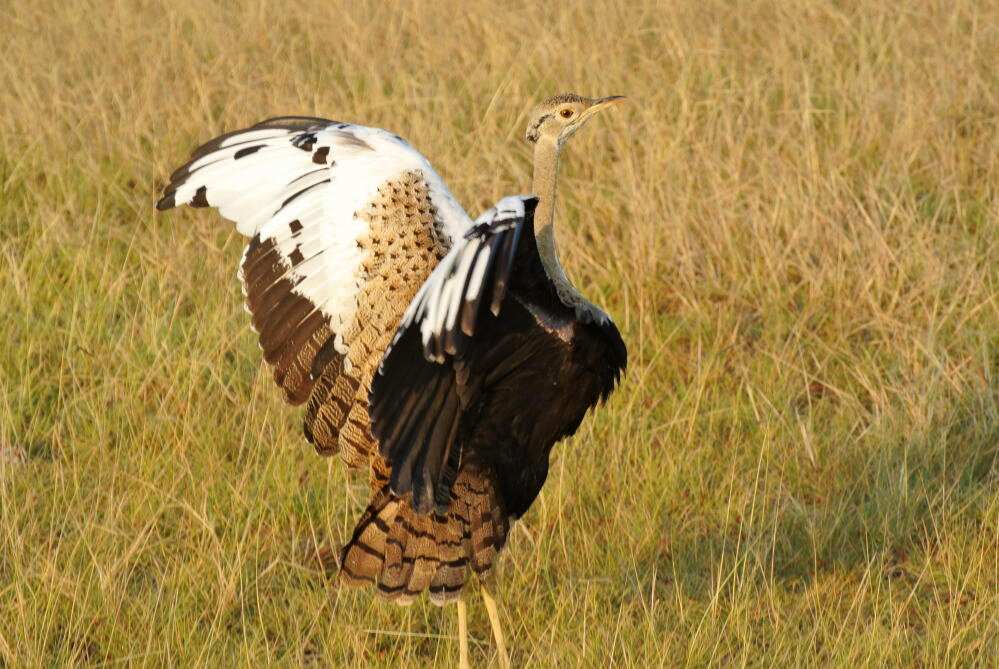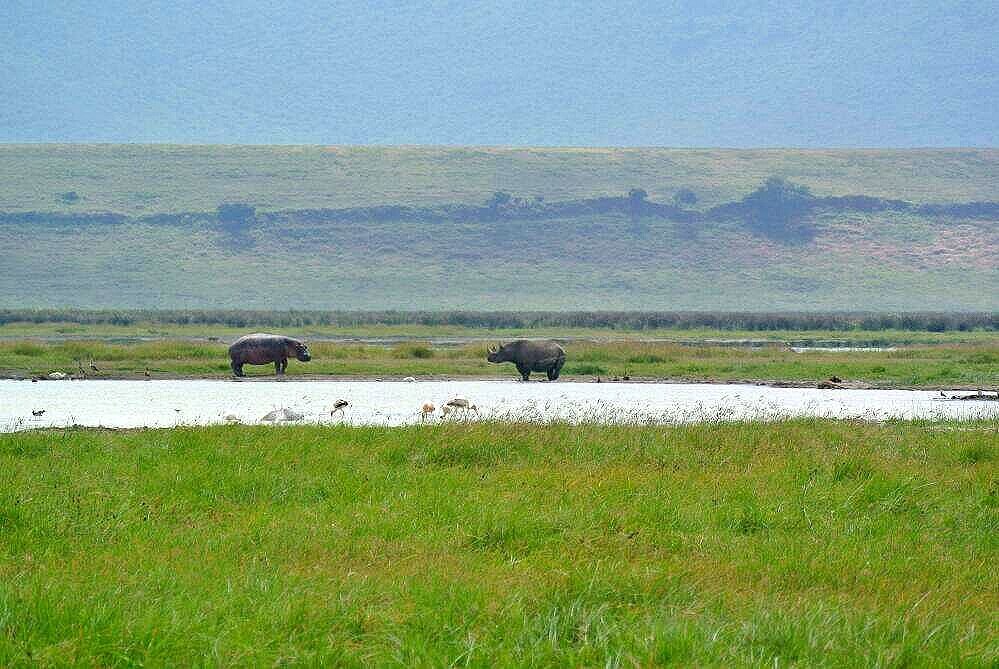TANZANIA | NGORONGORO CRATER
With heavy hearts but a lifetime of memories, we left Central Serengeti and made our way to Lake Manyara to start the journey to the Crater where much to our amazement, David Yarrow, a famous wildlife photographer was also on our plane.
On arrival, we were met by Kakae, our guide for the Crater. The scenery was in stark contrast to the Serengeti’s dry plains with lush green forests and huge tree canopies rising high above us. At the viewing spot, thankfully the clear skies afforded us an incredible view of the world’s largest, inactive and intact volcanic caldera covering 100 square miles. From there, we ascended into the highlands passing by Maasai villages, colourful tribemen wearing their shuka cloths and grazing zebras and giraffes.
That evening, we opted to do the highlands walk concluding with a visit to a local Maasai village. We were met by our Maasi guide, Kakaw and also a park ranger who briefed us on safety. We came across family of giraffes known as a tower of giraffe if stationery, and a journey of giraffe if on the move and passed by Maasai watching over their cattle.
We ended the walk at a local village where we were greeted to their welcome dance with the ladies chanting and the men competing to jump the highest. I joined in with the ladies wearing one of their collars and trying to keep up to music’s rhythm. We then toured the village and saw where the cattle lived (they take the baby calves into their mud huts for better protection) and their homes with a fire in the middle and then two smaller partitions for sleeping. It was a humbling experience especially being able to observe another culture and their traditions.
It was dusk when we left so we jumped in the vehicle making our way back to camp. We were surprised to pass a baby giraffe by the road but suddenly out of nowhere two young lions leapt out and ran pass the car. Kakaw told us they were hunting and then unexpectedly, the rest of the pride appeared (on the same road we had walked on hours earlier). To see lions on the hunt is quite a spectacle- their fierce expression, piercing eyes and slow movements is not for the faint-hearted. It was a brief but unforgettable encounter and the next day as we drove off to the crater, we saw the giraffes but their baby was gone.
An incredible dawn broke as we descended into the crater, and Kakae told us the story of Bernhard and his son Michael Grzimek, both devout conservationists. Back in the 1950s, they surveyed the wildebeest migration in their famous zebra-striped plane, and by finding out more about their migratory behaviour they could adjust the Serengeti’s National Park’s borders to protect these herds. Sadly Michael died in a plane accident in the crater. Both are buried together and a tombstone is erected close by in memory of them giving their life to Africa.
Despite being intact, the crater is huge and you wonder how you’ll see anything. I knew that this was the last place to spot the elusive rhino so I was hoping for a closer sighting. The scenery is beautiful, we watched a buffalo walk by a sea of flamingos and as Kakae, a keen birder pointed out a black bellied bastard, a red and yellow barber and Montague Harriot. But the elegant ostrich is still my favourite – we saw both male (black feathers) and female (brown feathers).
After a picturesque breakfast by a lake, we headed off to the other side where we came across a lion and lioness who were in the middle of mating. Lions mate for up to a week and around every 15-20 minutes a day. We waited patiently and the lioness abruptly stood up followed by the lion and did their business.
We then drove on to find the rhino that had been spotted earlier. She was lying down by a pool unaware of a hippo basking in the water nearby, before walking onto shore. The rhino immediately shot up facing the hippo directly and a 20 minute stand off began. In the end, the hippo retreated elsewhere but this theatrical performance gave us another insight into animal behaviour.
It was in the crater that Joel told us that when they saw a pride of lions about to kill a baby rhino that all the jeeps circled him and stayed until the lions moved on. Rhino numbers are so low that the human intervention was justified but it would have been a different story had they not been there. Unfortunately poaching has also impacted elephants and Tanzania has seen a 60% population decrease between 2007 and 2014. It’s a sad story, especially for future generations who may miss out.
We were elated to have seen mating lions and the rhino and hippo face off so we said to goodbye to the crater and the next day we set off for our final stop, Tarangire Park.











